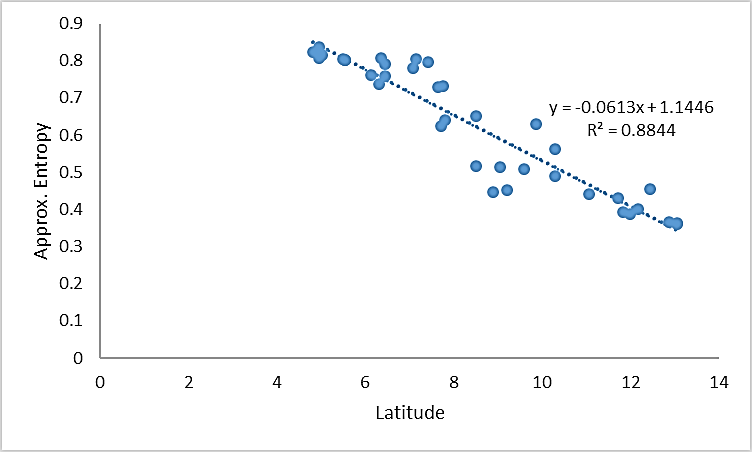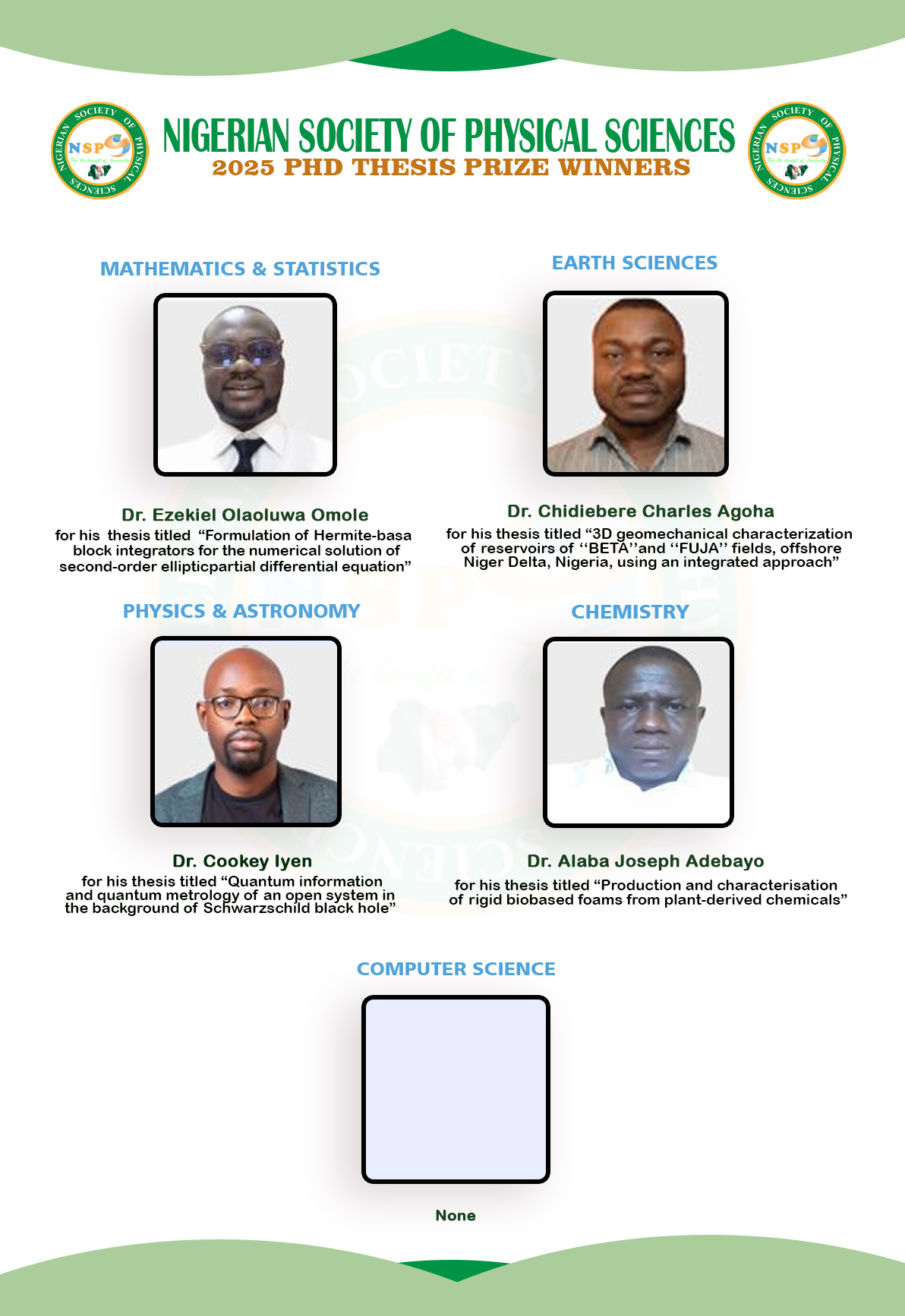Investigation of the spatial distribution of deterministic chaos in some meteorological variables across Nigeria
Keywords:
Nonlinear dynamics, Chaos, Correlation dimension, Lyapunov exponents, Approximate entropyAbstract
In this study, the spatial variation of dynamical complexities in selected meteorological variables over Nigeria were investigated. Quantitative tools of nonlinear analysis such as correlation dimension, Lyapunov exponents and approximate entropy were implemented on daily mean values of meteorological variables recorded across Nigeria from 1982-2020. Results obtained from the analysis confirms that there is low-dimensional deterministic chaotic dynamics in the climate across Nigeria as a result of the positive Lyapunov exponent values obtained; with values spatially ranging from 0.00181-0.0591 for precipitation, 0.00696-0.277 for wind speed, 0.00369-0.26 for temperature and 0.00109-0.00698 for all sky radiation. It was observed that the northern part of the country has higher degree of chaos in precipitation and air temperature as the Lyapunov exponents increased latitudinally while the southern part exhibits more chaotic dynamics in wind speed and all-sky radiation as a result of coastal effects. Correlation dimension values for precipitation significantly affirmed nonlinearity with values ranging spatially from 0.106-2.34 (increasing latitudinally from North to South) while wind speed (3.81-4.26), air temperature (3.55-4.25) and all sky radiation (3.59-4.25) also affirmed nonlinearity and low dimensional chaos but showed insignificant spatial trends across the country. Furthermore, precipitation was found to exhibit more steady repetitive pattern in the northern part of the country with entropy values ranging from 0.359-0.837 while wind speed, air temperature and all-sky radiation showed less repetitive patterns along the border locations in the far north and coastal cities in the south with entropy values ranging from 0.703-0.932, 0.724-0.892 and 0.718-0.877 respectively. The irregular trends are attributed to local and external factors such as human anthropogenic activities leading to greenhouse gas emission/global warming, topography of these locations and variations in the position of the Inter-Tropical Discontinuity as a result of different nonlinear resonances emanating from the coupling of the oceans, the atmospheric system and the El Nino/Southern Oscillations (ENSO).

Published
How to Cite
Issue
Section
Copyright (c) 2025 I. M. Echi, E. V. Tikyaa, E. J. Eweh, A. A. Tyovenda, T. Igbawua

This work is licensed under a Creative Commons Attribution 4.0 International License.
How to Cite
Most read articles by the same author(s)
- Tertsea Igbawua, Aondongu Alexander Tyovenda, Terver Sombo, Idugba Mathias Echi, Fanan Ujoh, Investigating factors influencing PM2.5 threshold exceedance in Nigeria using multivariate logistic regression analysis , African Scientific Reports: Volume 3, Issue 3, December 2024
- Terver Sombo, Titus Nyitar, Emmanuel Vezua Tikyaa, Tertsea Igbawua, Investigation of diurnal road traffic noise in Makurdi metropolis, Benue State, Nigeria , African Scientific Reports: Volume 4, Issue 2, August 2025
- Louis Tersoo Abiem, Tertsea Igbawua, Jacob Tersugh Adawa, Investigation of direct normal irradiance and total cloud cover connection over Nigeria using satellite data , African Scientific Reports: Volume 4, Issue 3, December 2025 (In Progress)




